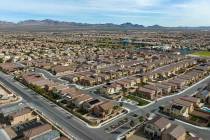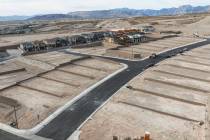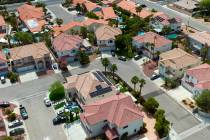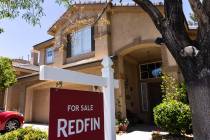Risks arise if too many refinance
NEW YORK — Lots of homeowners are frustrated these days that they can’t seem to get a mortgage refinance even though interest rates are at historic lows. It turns out they’re not alone.
Plenty of people on Wall Street would also love to see a boom in refinancing activity, saying it would be a near-painless way to inject more money into the economy. If more people can refinance, the thinking goes, the more cash they’ll have to spend.
Those economists and analysts calling for a mass mortgage reset say it could be engineered by the government, which controls the giant mortgage lenders Fannie Mae and Freddie Mac. Have them loosen underwriting standards and give breaks on fees, and more people will qualify to refinance.
Here’s what the Obama administration says about that idea: Don’t get your hopes up. And that’s a good thing, since ushering in a refinancing boom would only be a short-term fix for the housing market and the economy that would have long-term consequences.
A widespread refinancing of loans would mean reverting to looser lending standards, one of the things that got us into this mess. It could also boost mortgage rates for new borrowers and force U.S. taxpayers to shoulder more risk, since they technically own Fannie and Freddie.
“At some point, we have to ask ourselves how much more can we ask taxpayers to do to support people staying in their homes,” says Dean Baker, co-director of the left-leaning Center for Economic and Policy Research in Washington.
Wall Street has been abuzz in recent weeks over the possibility of the government engineering a broad refinancing of loans.
Mortgage rates for a 30-year fixed home loan are now 4.49 percent, the lowest it has been since Freddie Mac began tracking rates in 1971. But millions of borrowers haven’t been able to benefit from those low rates.
A big reason has to do with the fact that falling housing prices have left many borrowers with little or no home equity, which is also known as being “underwater.” As a result, they can’t qualify for refinancing. Others are deterred from refinancing by strict lending standards and the high fees that come with it.
To get more mortgage resets done, some well-known economists and analysts at firms like Morgan Stanley and Goldman Sachs say the government should encourage a refinancing wave by adjusting lending policies at Fannie and Freddie.
The mortgage lenders were taken over by the government two years ago. They own or guarantee about half of all U.S. mortgages, or nearly 31 million home loans worth more than $5 trillion. They buy home loans from lenders, package them into bonds with a guarantee against default and sell them to investors.
The savings from a major mortgage reset could be significant. Allow someone with a $200,000 mortgage at 6 percent to refinance down to 4.5 percent, and suddenly there is $3,000 a year available to be plunged back into the economy. Add that up across millions of people, and you have what Morgan Stanley economist David Greenlaw calls a “slam dunk stimulus.”
The government is already trying to help borrowers refinance, but its existing program has been a bust. The Home Affordable Refinance Program, or HARP, is directed at homeowners whose loans nearly or completely outsize the value of their homes. The government had hoped HARP would lead to millions of mortgage resets, but only a few hundred thousand have been done.
The problem is that there are too many restrictions when trying to refinance under HARP. That’s why some people on Wall Street want the government to roll out a less restrictive program to get more mortgages resets done.
Regardless of the pressure coming from homeowners and some on Wall Street for the government to ease refinancing rules, Treasury Department spokesman Andrew Williams tells The Associated Press that “the administration is not considering a change in policy in this area.”
The government sees where the pitfalls are. Taxpayers have already pumped $145 billion into Fannie and Freddie over this last two years, and widespread refinancing now could raise that burden.
Fannie and Freddie would very likely see their earnings decline and write-downs on their mortgage securities go up. In total, a mass mortgage reset could cost the mortgage lenders $75 billion, according to research from investment firm Keefe, Bruyette & Woods.
Let’s also consider that a refinancing boom could have unintended consequences.
The pace of foreclosures might not slow. A lower interest rate still might not be attractive enough for deeply underwater borrowers to stay in their homes. To some, it is not worth paying any money toward a depreciating asset, regardless of the interest rate.
New borrowers could also face higher interest rates. A large refinancing wave would depress the value of mortgage-backed securities, making them less attractive to investors such as pension funds and foreign governments. Weak demand for those securities could lead to higher mortgage rates because lenders could have a harder time selling off their loans to investors.
Rachel Beck is the national business columnist for The Associated Press. Write to her at rbeck@ap.org


















